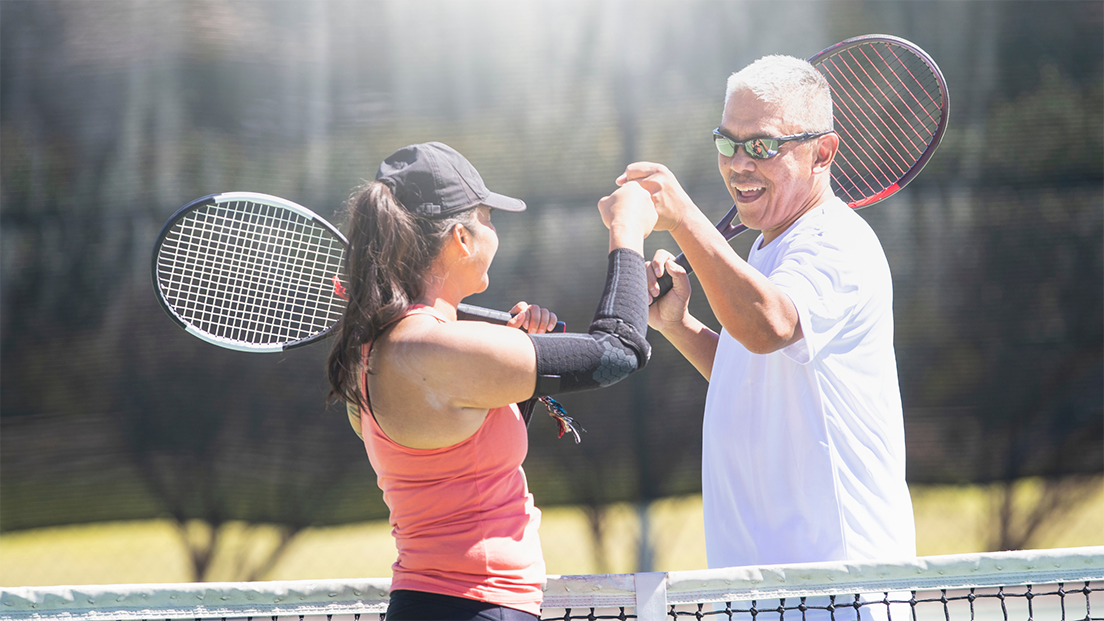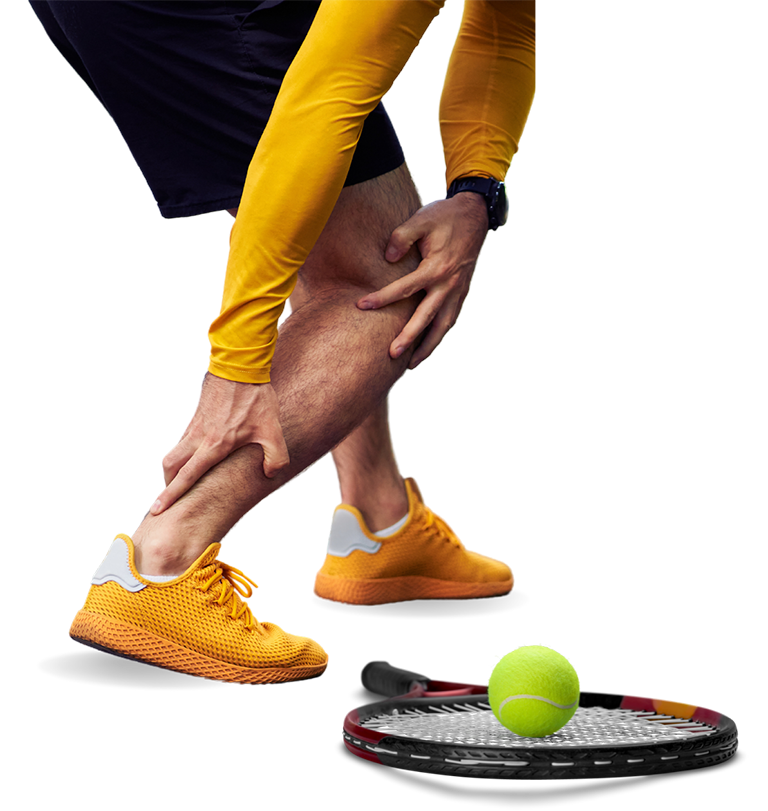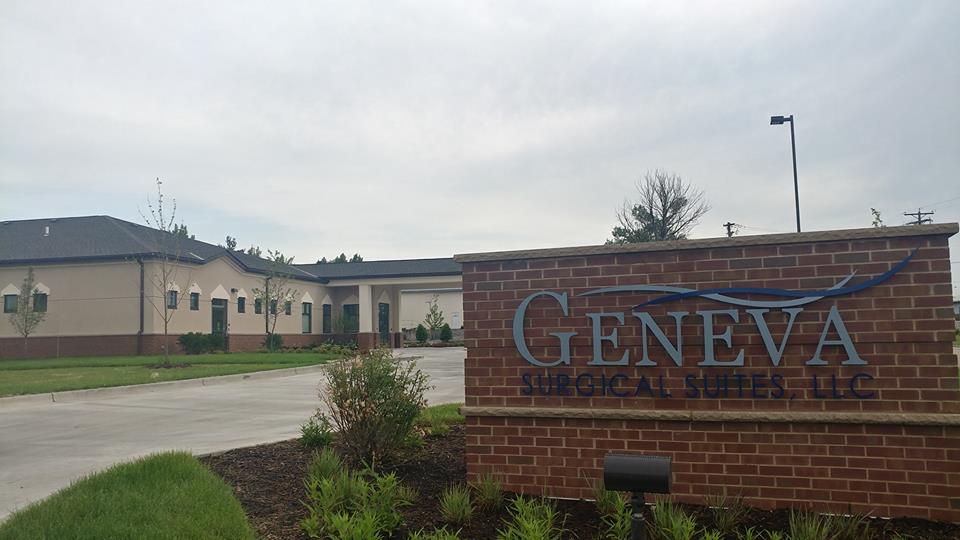
The score is 40-30, the next point wins. The midday sun beats down on your neck as you throw the tennis ball up in the air. As you rear your arm, you suddenly hear a crack in your back and crumble to the ground in pain.
Whether you’re an elite tennis player like Serena Williams or Rafael Nadal, or just someone who loves a game on the weekend, tennis injuries happen at any time.
But armed with the knowledge of what to look for and how to avoid tennis injuries, you can stay playing pain-free for much longer. We created this guide for preventing common tennis injuries to keep you on the court this spring.
What are Common Tennis Injuries?
A single-serve utilizes your legs, upper back, chest, shoulders, biceps, and triceps. One slip up anywhere could cause a painful (but avoidable) injury. Here are a couple of the most common tennis injuries that players encounter.
Tennis elbow

Tennis elbow is “caused by overuse of arm, forearm, and hand muscles that results in elbow pain.” While not limited to tennis, this injury is relatively common in tennis players due to the muscle movements used during matches.
A tennis elbow injury “involves the area where the muscles and tendons of the forearm attach to the outside bony area (called the lateral epicondyle) of the elbow.”
Common symptoms of tennis elbow include pain radiating “from the outside of your elbow into your forearm and wrist.” The pain may also make it difficult to hold onto a cup, shake someone’s hand, or turn a doorknob.
While typical, tennis elbow is preventable with the proper knowledge.
Rotator cuff injuries

Rotator cuff injuries are “usually progressive overuse injuries ranging from partial-thickness articular- or bursal-sided tears to full-thickness tears.”
The rotator cuff connects the “humerus to the shoulder blade and helps to lift and rotate your arm.” That means every time you serve or swing your tennis racket, you are putting an intense amount of force on your shoulder.
If you have any shoulder pain, it’s wise to take it easy for a bit until the pain goes away. If the pain is still there after a week, call an orthopedic surgeon and they will better assess whether or not the injury needs further attention.
Ankle sprain

Tennis player or not, an ankle sprain is a common injury that can happen anywhere and anytime. But tennis players who rely on quick foot movements can easily take a wrong step and end up with a swollen ankle the following day.
A “sprained ankle occurs when the ligaments are forced beyond their normal range of motion” and frequently affect the outer side of the ankle.
Common symptoms include pain, tenderness, swelling, bruising, and a restricted range of motion for an ankle sprain. If you have a sprained ankle, it’s pretty hard to overlook it as the pain arrives quickly, as does the swelling. You do not want to keep playing tennis with an ankle sprain, as the hard movements on the court can promptly aggravate the injury.
Achilles tendon rupture
Playing tennis requires fast reflexes and even faster foot movements. As a result, Achilles tendon ruptures are a reasonably common tennis injury.

An Achilles tendon rupture “occurs usually through a push-off mechanism, a sudden and unexpected dorsiflexion of the ankle, or a violent dorsiflexion of a plantarflexed foot.” In other words, every time you push off of one foot on the court, there is the possibility of an Achilles tendon rupture.
Due to the partial or complete disruption of the tendon just above the heel, an Achilles tendon rupture affects the back of your lower leg. If there is a rupture, “you might hear a pop, followed by an immediate sharp pain in the back of your ankle and lower leg that is likely to affect your ability to walk properly.”
An Achilles tendon rupture is a severe injury often requiring surgery, so if you experience any of the above symptoms, you should reach out to a doctor immediately.
Jumper’s knee

Jumper’s knee, also known as patellar tendonitis, is caused by “the explosive muscle contractions needed for the
sprinting, jumping and quick changes of directions during tennis.” Anyone playing tennis is susceptible to jumper’s knee.
Early signs of jumper’s knee include sharp pain in the tendon below the kneecap after performing any tennis maneuver, including serving, sprinting, or changing direction.
If left untreated, jumper’s knee can lead to tears in your tendon, which would require a much longer, more painful journey back onto the tennis court.
Back pain

During a tennis match, “the combined rotation, flexion, and extension of the back” can all lead to lower back pain. Many movements in tennis require lower back muscles, so it’s easy to understand why back pain is a common tennis injury.
“Older tennis players seem to have the most back pain due to progressive stiffness and degenerative disease,” but because of the elongated/arched posture during serves, anyone can suffer from this injury.
The main symptom of lower back pain is a sudden, sharp, persistent, or dull pain in the lower back, pain while standing/sitting/running for extended periods, and even back spasms.
If you’re suffering from back pain for more than a couple of days, it would be a good idea to reach out to your doctor, as it could be a sign of a more serious tennis injury.
How Can You Avoid a Tennis Injury?
When it comes to common tennis injuries, prevention will always be better than the cure.
Part of that includes maintaining a consistent fitness regimen, including strength training and stretching, while also taking care of your body when dealing with any pain.
Exercise the right muscles.
To avoid common tennis injuries, you should first look to strengthen your muscles.
For example, when looking to avoid lower back pain, you should focus on abdominal and back muscles to protect the back. Some exercises include a straight crunch, oblique crunch, and balance exercises on a gym ball.
When it comes to wrist injuries, strengthening the muscles in your forearms can protect you. Use light resistance bands or small weights and practice grip exercises to avoid wrist injuries.
A fitness routine designed around strengthening the muscles most commonly used in tennis is one of the most effective ways to prevent common injuries.
Don’t forget to stretch.

Start your warm-up with a light jog, and then incorporate some light tennis movements (swings, serves, side-to-side movements). Once you’re done with that, move on to a dynamic stretching routine that focuses on all of the muscles you’ll use during the match.
The first should be a wrist and forearm stretch. To do this, you’ll “place one arm straight out in front and parallel to the ground. Rotate your wrist down and outwards and then use your other hand to further rotate your hand upwards.”
After that, the next stretch should focus on your lower body and Achilles. There are many options, including standing toe raises, standing Achilles stretches, and a seated towel stress. Mix and match two of these stretches into your warm-up routine to help avoid needless Achilles injuries.
Lastly, take some time in your warm-up to stretch out your hips. As the center of your body, hip muscles provide torque and balance during tennis. Lunges make for a significant first step, especially if followed up by a hip flexor side stretch.
Adding stretching into your pre and post-tennis match routine goes a long way in preventing common tennis injuries.

Use the right gear.
Whether you are a professional, amateur, or weekend tennis player, wearing the right gear can make all the difference when it comes to treating your body right.
The first item to think about is wearing proper-fitting tennis shoes. Since you’ll be on your feet so much and making sudden movements on the hardcourt, a pair of tennis shoes that offer support help prevent rolled ankles and Achilles injuries.
You’ll also want to think about the grip size on your tennis racket; an ill proper fit leads to wrist and forearm injuries.
Go to an official tennis shop to get the right equipment to avoid common tennis injuries.
What Should I Do If I Have a Tennis Injury?
If you feel any pain during play, you should take a break to avoid further damage. In most cases, light amounts of pain only require rest and an ice pack.
No matter what, you should not play tennis if you are hurting.
But in those instances where the pain is severe and lasts longer than a couple of days, it’s essential to stay off of the court and visit your doctor. There is always a chance that that slight twinge of lower back pain could be a symptom of something much bigger.
Want More Information About Tennis Injury Treatment? Call CORE Orthopedics Today.
CORE Orthopedics specialists treat hip, knee, spine, and elbow injuries. Our goal is to make sure you stay on the tennis court this spring, so if you’re experiencing any pain as the result of a tennis injury, don’t hesitate to call us at (847) 690-1776.
Location Information
Surgical Affiliations

Geneva Surgical Suites
119 Elizabeth Ln., Genoa City, WI 53128
Phone: 262-295-1213
Alexian Brothers Medical Center
800 Biesterfield Rd.
Elk Grove Village, IL 60007
Phone: 847-437-5500
St. Alexius Medical Center
1555 Barrington Rd.
Hoffman Estates, IL 60169
Phone: 847-843-2000
Advocate Good Shepherd Hospital
450 West Highway 22
Barrington, IL 60010
Phone: 847-381-0123



